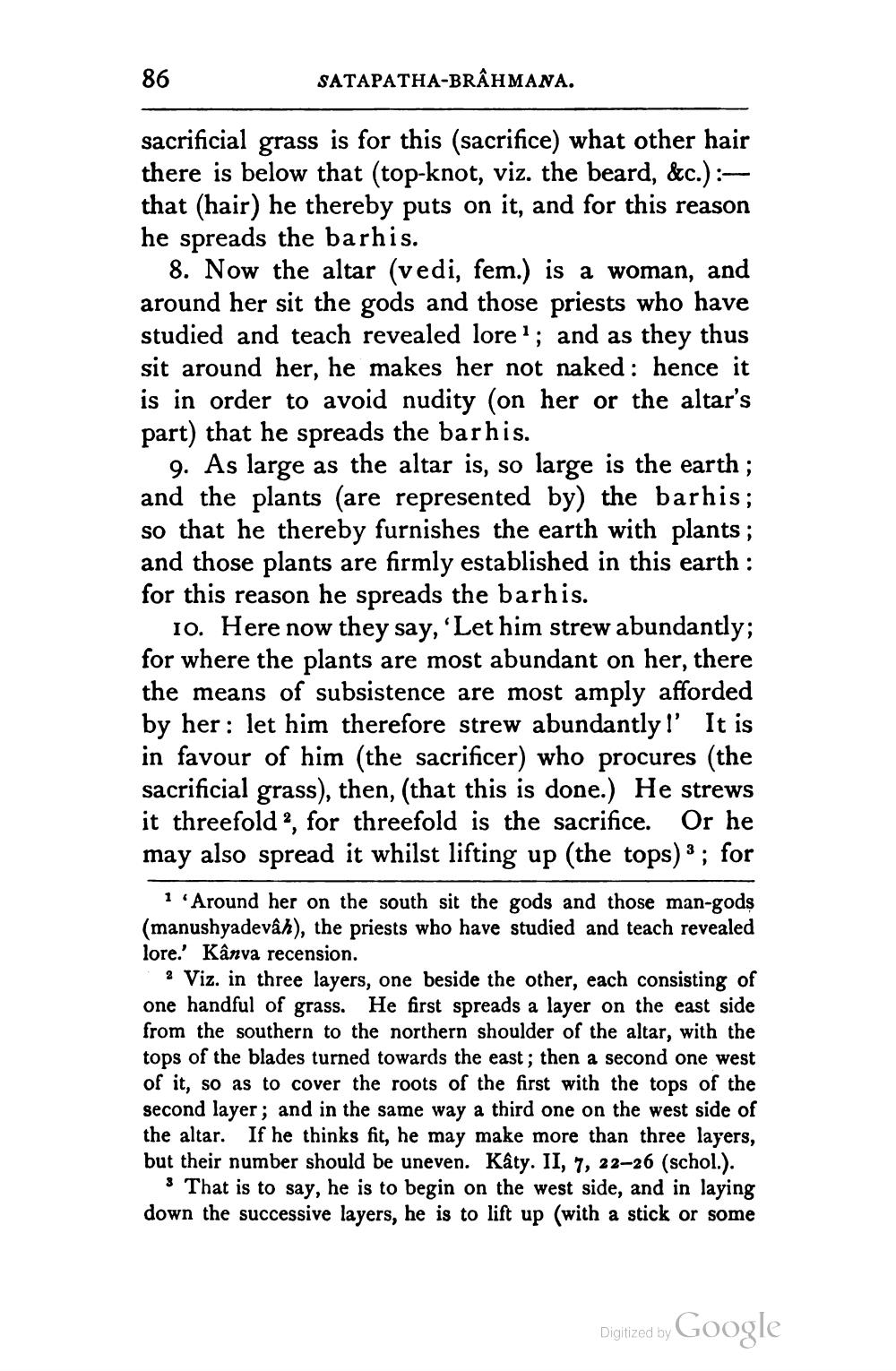________________
86
SATAPATHA-BRAHMANA.
sacrificial grass is for this (sacrifice) what other hair there is below that (top-knot, viz. the beard, &c.) :that (hair) he thereby puts on it, and for this reason he spreads the barhis.
8. Now the altar (vedi, fem.) is a woman, and around her sit the gods and those priests who have studied and teach revealed lore?; and as they thus sit around her, he makes her not naked : hence it is in order to avoid nudity (on her or the altar's part) that he spreads the barhis.
9. As large as the altar is, so large is the earth ; and the plants (are represented by) the barhis; so that he thereby furnishes the earth with plants; and those plants are firmly established in this earth : for this reason he spreads the barhis.
10. Here now they say, 'Let him strew abundantly; for where the plants are most abundant on her, there the means of subsistence are most amply afforded by her: let him therefore strew abundantly!' It is in favour of him (the sacrificer) who procures (the sacrificial grass), then, (that this is done.) He strews it threefold, for threefold is the sacrifice. Or he may also spread it whilst lifting up the tops) 3 ; for
1 Around her on the south sit the gods and those man-gods (manushyadevâh), the priests who have studied and teach revealed lore.' Kânva recension.
2 Viz. in three layers, one beside the other, each consisting of one handful of grass. He first spreads a layer on the east side from the southern to the northern shoulder of the altar, with the tops of the blades turned towards the east; then a second one west of it, so as to cover the roots of the first with the tops of the second layer; and in the same way a third one on the west side of the altar. If he thinks fit, he may make more than three layers, but their number should be uneven. Kâty. II, 7, 22–26 (schol.).
3 That is to say, he is to begin on the west side, and in laying down the successive layers, he is to lift up (with a stick or some
Diglized by Google




